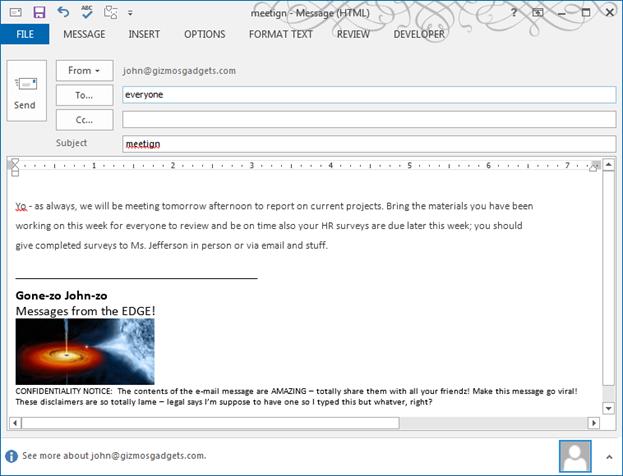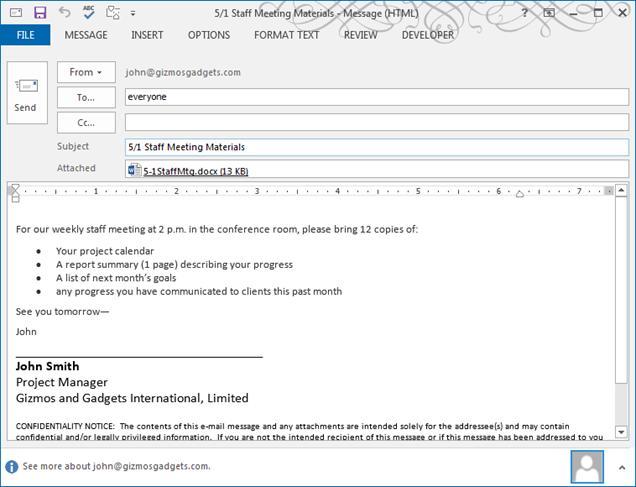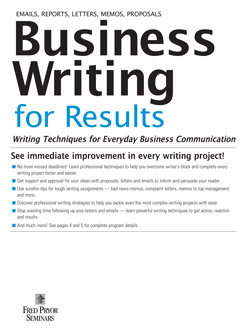How NOT to Write an Email
How often have you re-read a lengthy email and STILL had no clue what you were supposed to do? Or received a response to your message that clearly indicated the recipient either failed to read or understand what you wanted? A single message mistake can mean the difference between a constructive, helpful response and a forget-this-send-straight-to-my-delete-folder trap.
All of us have suffered from failures in email communication – either because we, or someone else, didn’t communicate well. But what makes an email effective? What separates success from failure? Following a few simple rules can make a big difference in how well our emails are received.
SAVE $10 AND TRAIN ON THIS TOPIC TODAY
We’ve prepared a sample email so you can test your email know-how. Read through it and see how many opportunities for improvement you can pinpoint. Then, see if you can re-write it so it’s more effective. The answers, and our re-written version, are below.
How many did you find? Here’s our list:
Error 1: A so-so subject
John opens with a generic subject line that might apply to any number of meetings. Make your subject line specific and direct to ensure people know what the email is about to improve clarity and chances that people will open your message.
Error 2: Irrelevant Info
Including irrelevant information, such as the details about the HR surveys, creates confusion and distracts the reader. Move other updates or notes into another email with an appropriate subject and due date.
Error 3: Missing materials
John didn’t include the information or materials he references in the email. The meeting time should be mentioned, and the materials should be included as an attachment.
Error 4: Grammar goofs
Make sure you proof and edit your message before sending it. There are a number of writing errors in the message that should have been removed prior to the message having been sent.
Error 5: Absentee action
Make sure you’re clear about what you need the recipient to do in response to your email. Tell the reader what is needed, by when, and in what format. If no action is required – say so.
Error 6: Tone trouble
John’s tone is neither business-appropriate, nor positive enough. Always make sure you maintain a professional tone in business communications (using personal nicknames and silly taglines are usually not acceptable). A positive tone, rather than a negative one, is much more likely to get a positive response from the reader.
Here’s our re-write to Johns’ email. How did it match up with yours?







